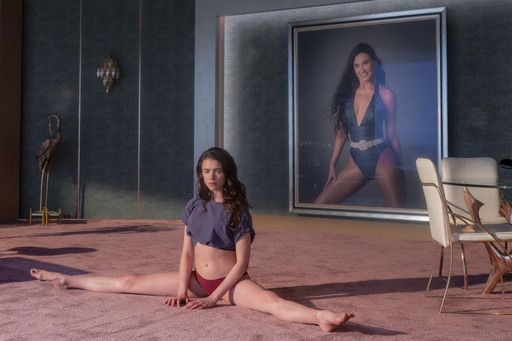
NEW YORK — Recent studies reveal a noteworthy shift in the film industry, marking a historic moment where the proportion of top-grossing films with female protagonists now matches that of their male counterparts. This notable change was highlighted in reports released on Tuesday, showcasing the significant progress made in gender representation within leading roles in cinema.
Among the films contributing to this breakthrough are blockbusters such as “Wicked,” “Inside Out 2,” and “The Substance.” These titles helped propel Hollywood’s theatrical releases to gender balance in 2024, with 42% of the top 100 films in domestic gross featuring female protagonists, equal to the 42% representation of male leads, according to a report from the Center for the Study of Women in Television and Film at San Diego State University.
Additionally, the USC Annenberg Inclusion Initiative, in its annual assessment, indicated that 54% of the top 100 box-office films starred female leads. This marks a striking rise from the previous year, where only 30% of films showcased women in prominent roles. The trend is even more apparent when looking back to 2007, the inception year of the USC study, when the percentage was a mere 20%.
“This is the first time we can affirm that we have achieved gender equality in top-grossing films,” stated Stacy L. Smith, the founder of the Annenberg Inclusion Initiative. In 2024, three of the five highest-grossing films prominently featured female characters, including the top film of the year, Disney’s “Inside Out 2.” Smith emphasized that the profitability of female-led narratives has long been established, attributing this progress not to newfound economic insights but rather to steady advocacy, initiatives from studios, and demands for equity on screen.
However, while celebrating these strides in leading roles, other findings point to continued disparities within Hollywood. The San Diego State study reported a slight increase in the proportion of female characters with speaking parts, rising from 35% to 37% in 2024. Additionally, significant female characters increased only marginally from 38% in 2023 to 39% in 2024.
“Films like ‘The Substance’ are counterbalancing a culture that sees women as expendable,” remarked Martha Lauzen, director of the Center for the Study of Women in Television and Film. Although the number of films led by women reached an unprecedented high in 2024 following a tepid 2023, gains in more stable categories like major roles or speaking opportunities for women remained minimal.
Universal Studios, under the leadership of Donna Langley, emerged with the strongest record for female representation in 2024, with 66.7% of its releases featuring female leads. Yet, both studies do not account for the many films released exclusively on streaming platforms or those outside the top 100 theatrical releases. Historically, top-grossing films have illustrated the film industry’s persistent struggle to mirror the diverse demographics of American society.
This imbalance is especially evident among underrepresented racial and ethnic groups, which collectively represent approximately 42% of the U.S. population. In 2024, a mere 25% of the highest-grossing films featured either an underrepresented lead or co-lead, with breakdowns including 38.9% Black, 15.4% Asian or Asian American, and 3.9% Hispanic characters. This statistic signifies a decrease from the previous year, where 37 leads or co-leads were individuals of color.
“The advancements in representation for female leads were not mirrored in the stats for underrepresented leads,” stated Smith. “This decline illustrates a lack of investment in narratives reflecting the broader audience. Audiences are eager for stories that include women and people of color—there need not be a dilemma between the two.”

